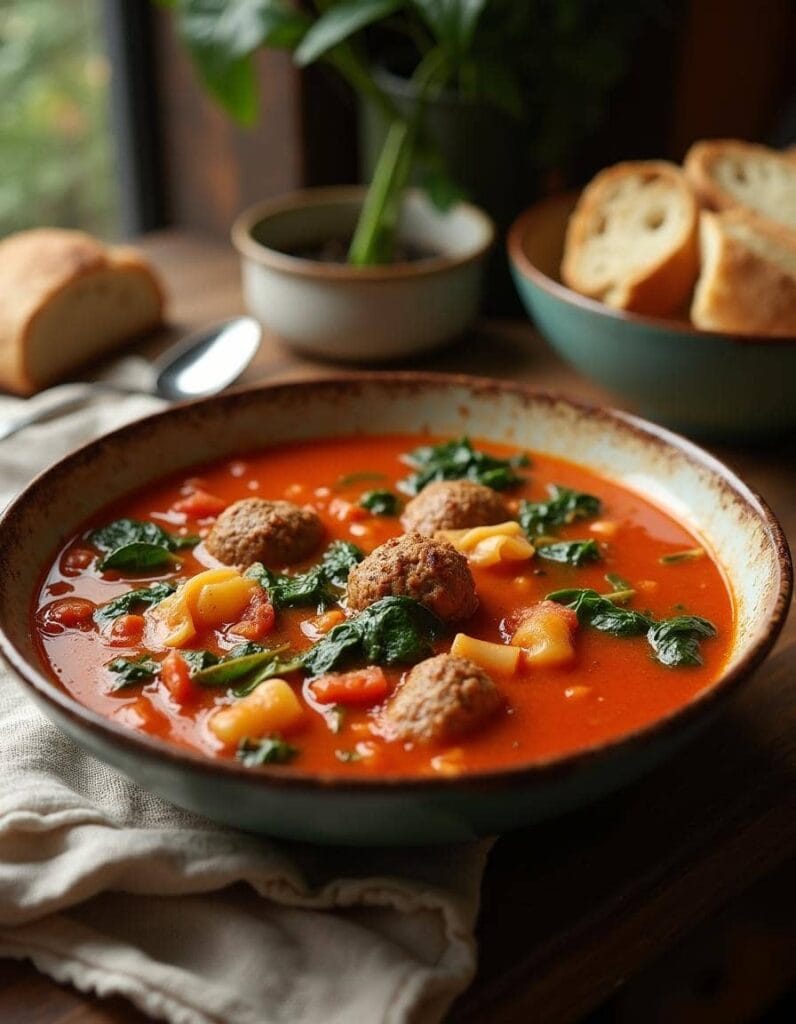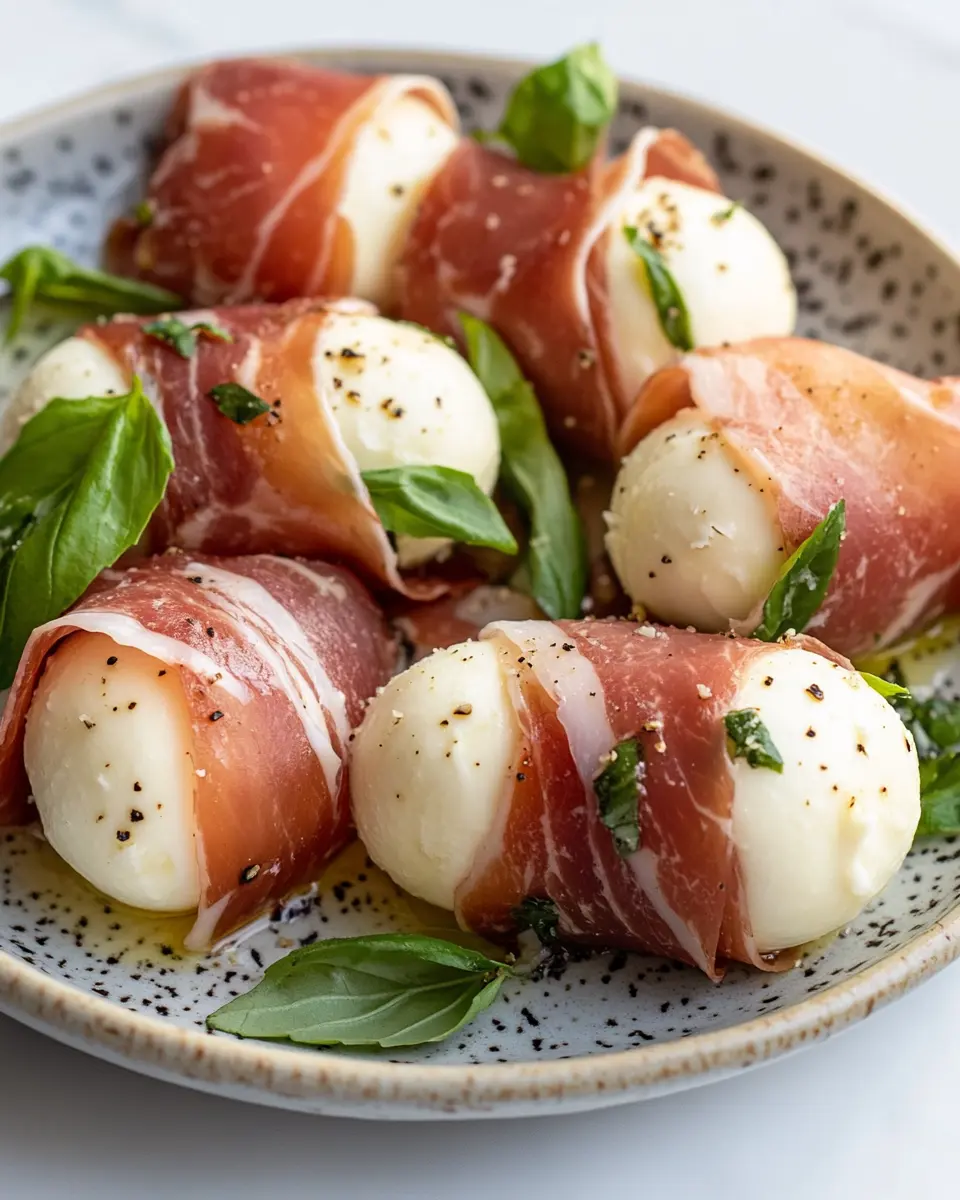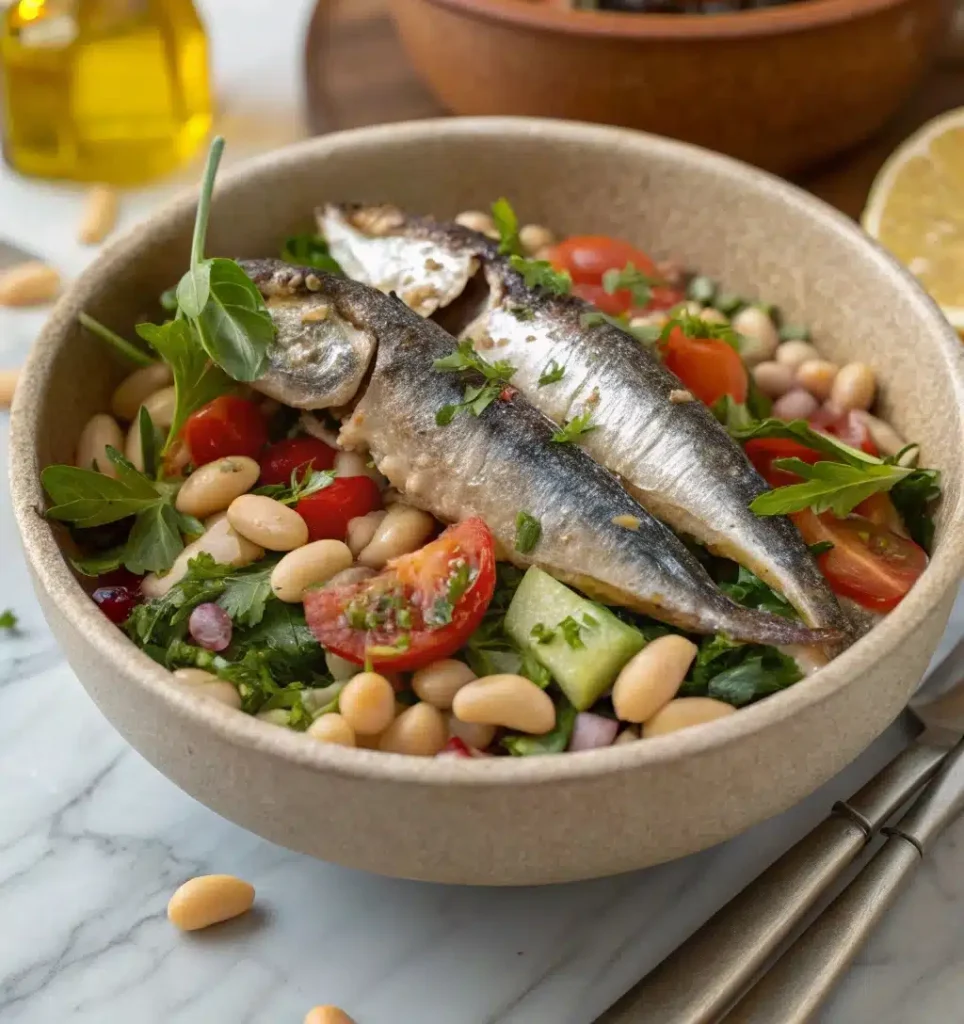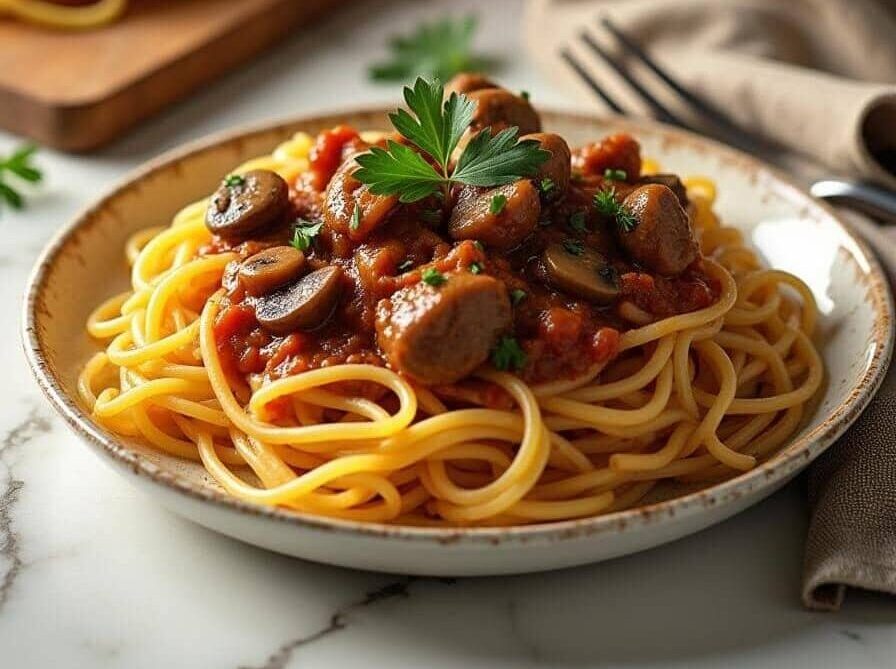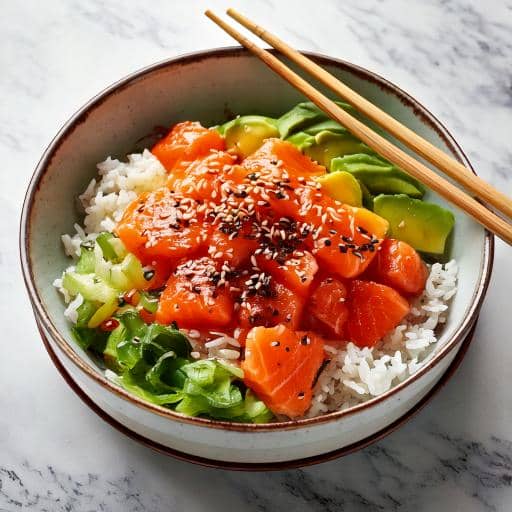
How to Make a Salmon Rice Bowl That Will Wow Your Taste Buds
A salmon rice bowl is a quick, healthy, and customizable meal featuring tender salmon, soft rice, and fresh toppings like avocado and cucumber. Drizzled with soy sauce or spicy mayo, this Japanese-inspired dish is perfect for a nutritious weeknight dinner or meal prep.
- Total Time: 25 minutes
- Yield: 2 servings 1x
Ingredients
- 1 cup white or brown rice (or cauliflower rice for low-carb)
- 1 salmon fillet (fresh, canned, or sushi-grade)
- ½ avocado, sliced
- ½ cup cucumber, sliced
- ¼ cup shredded carrots
- ¼ cup edamame, steamed
- 1 tbsp soy sauce or tamari
- 1 tsp sesame oil
- 1 tbsp spicy mayo (optional)
- 1 tsp furikake or toasted sesame seeds
Instructions
- Cook the Rice: Rinse and cook 1 cup of rice according to package instructions. Stir in rice vinegar for extra flavor.
- Prepare the Salmon:
- Baked: Preheat oven to 375°F. Season salmon with salt, pepper, and soy sauce. Bake for 12-15 minutes.
- Grilled: Brush salmon with oil and grill for 4-5 minutes per side.
- Raw: Slice sushi-grade salmon thinly.
- Chop the Toppings: Slice avocado, cucumber, and carrots. Steam edamame if using.
- Assemble the Bowl: Add cooked rice to a bowl, place salmon on top, arrange toppings, and drizzle with soy sauce and sesame oil.
- Garnish & Serve: Sprinkle with furikake or sesame seeds and enjoy!
Notes
- Leftover rice works well for this dish.
- Toasting sesame seeds enhances their flavor.
- Assemble the bowl just before eating to keep ingredients fresh.
- Prep Time: 10 minutes
- Cook Time: 15 minutes
- Category: Main Course
- Method: Stovetop, Baking, Grilling
- Cuisine: Japanese-Inspired
- Diet: Gluten Free
Nutrition
- Serving Size: Per Serving
- Calories: 450
- Sugar: 3g
- Sodium: 600mg
- Fat: 18g
- Saturated Fat: 3g
- Carbohydrates: 40g
- Fiber: 5g
- Protein: 28g
- Cholesterol: 55mg
Keywords: salmon rice bowl, healthy dinner, easy meal, Japanese-inspired, quick recipe, salmon recipe, meal prep, high protein, omega-3, sushi bowl
A salmon rice bowl is one of the easiest and tastiest meals you can make. It’s healthy, quick, and flexible enough for any diet. Imagine soft rice, flavorful salmon, and fresh toppings like avocado and cucumber. Top it all with a drizzle of soy sauce or spicy mayo. Sounds amazing, right?
This dish is perfect for weeknight dinners or even meal prep. It’s inspired by Japanese cuisine but can be customized in so many ways. If you’re a fan of quick and easy recipes, check out these Mediterranean Quinoa Power Bowls for another healthy option. For a fancier twist, try Smoked Salmon and Avocado Eggs Royale for brunch.
Where Salmon Rice Bowls Came From
Salmon rice bowls take inspiration from Japanese dishes like chirashi and donburi. These traditional meals combine rice with fresh seafood and vegetables. They are simple, balanced, and packed with flavor.
Over time, these bowls have become a popular choice worldwide. People love them because they are easy to make and can be customized with different ingredients. Whether you like it spicy, sweet, or tangy, there’s a salmon rice bowl for you.
Ingredients and Tools You’ll Need for a Perfect Salmon and Rice Bowl
Making a salmon rice bowl doesn’t require fancy equipment. Here’s what you need:
Essential Ingredients for a Healthy Salmon Bowl
- Salmon: Fresh, canned, or sushi-grade.
- Rice: Choose white, brown, or low-carb cauliflower rice.
- Fresh Toppings: Avocado, cucumber, shredded carrots, edamame, or pickled ginger.
- Flavorful Sauces: Soy sauce, tamari, sesame oil, or spicy mayo.
- Seasonings: Furikake, toasted sesame seeds, or chili flakes.
Tools for Easy Preparation
- Rice cooker or pot for perfectly cooked rice.
- Non-stick pan or baking sheet for salmon.
- A sharp knife for slicing vegetables and salmon.
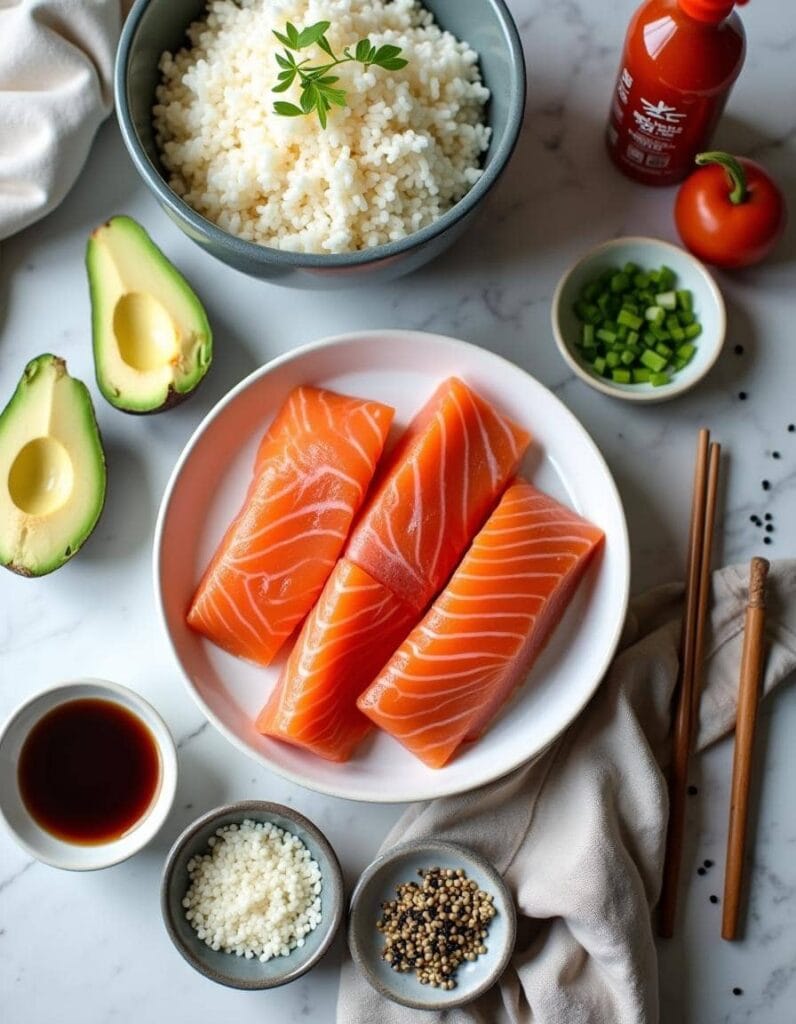
How to Prepare a Salmon Rice Bowl
Making this dish is all about preparation. Cook the rice, season and cook the salmon, and chop the toppings. Everything comes together quickly once you’re organized.
If you’re looking for something to serve alongside, consider this Lemon Butter Garlic Shrimp Pasta for a flavorful side dish.
Step-by-Step Guide: How to Prepare a Salmon Rice Bowl Recipe
1. Cooking the Rice Base
- Rinse 1 cup of rice to remove starch.
- Cook according to the package instructions. For extra flavor, stir in rice vinegar after cooking.
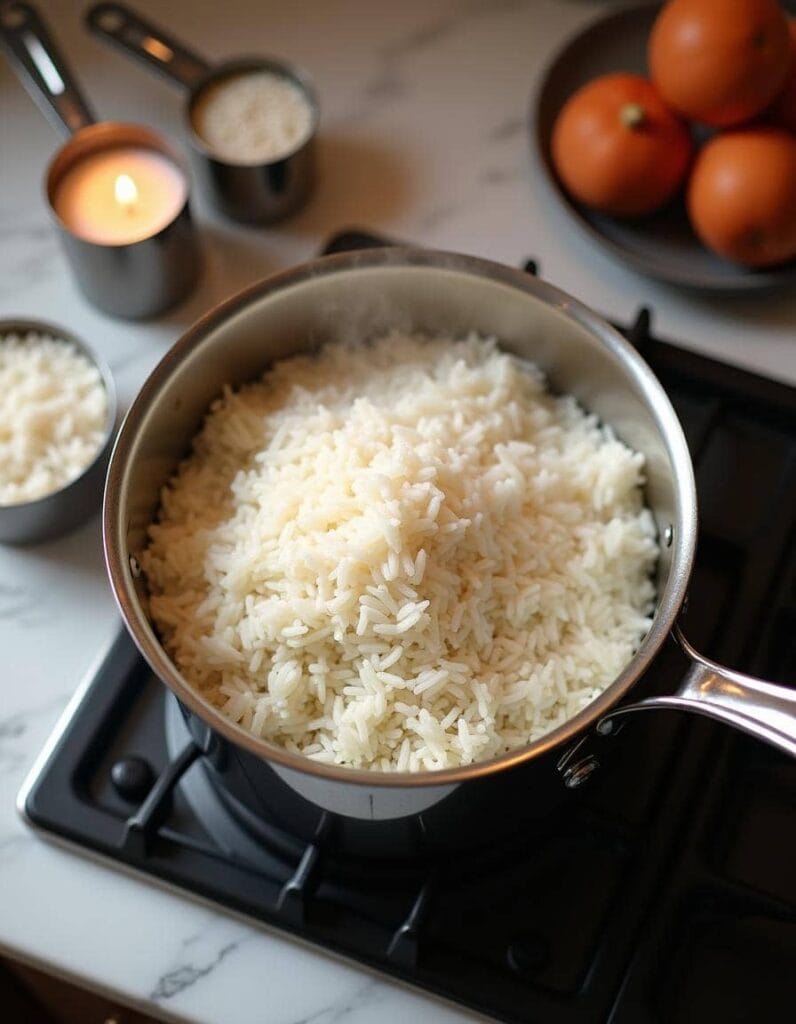
2. Cooking or Preparing the Salmon
- Baked Salmon: Preheat the oven to 375°F. Season the salmon with salt, pepper, and soy sauce. Bake for 12-15 minutes.
- Grilled Salmon: Brush the salmon with oil and grill for 4-5 minutes on each side.
- Raw Salmon: Slice sushi-grade salmon thinly with a sharp knife.
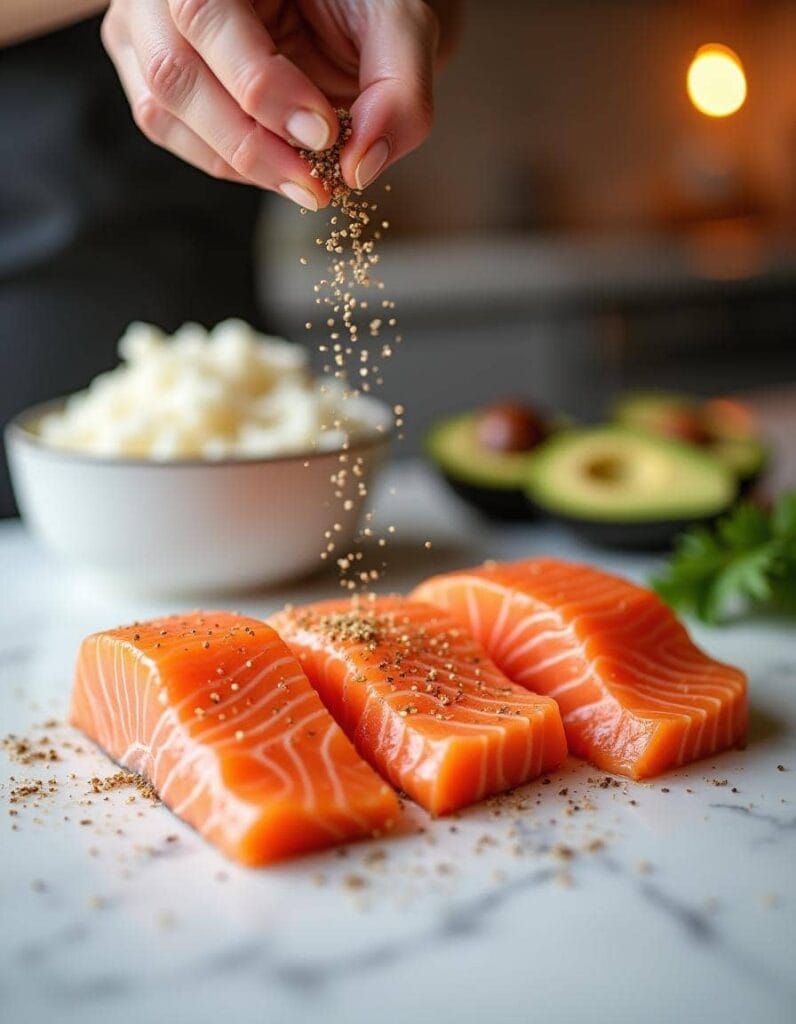
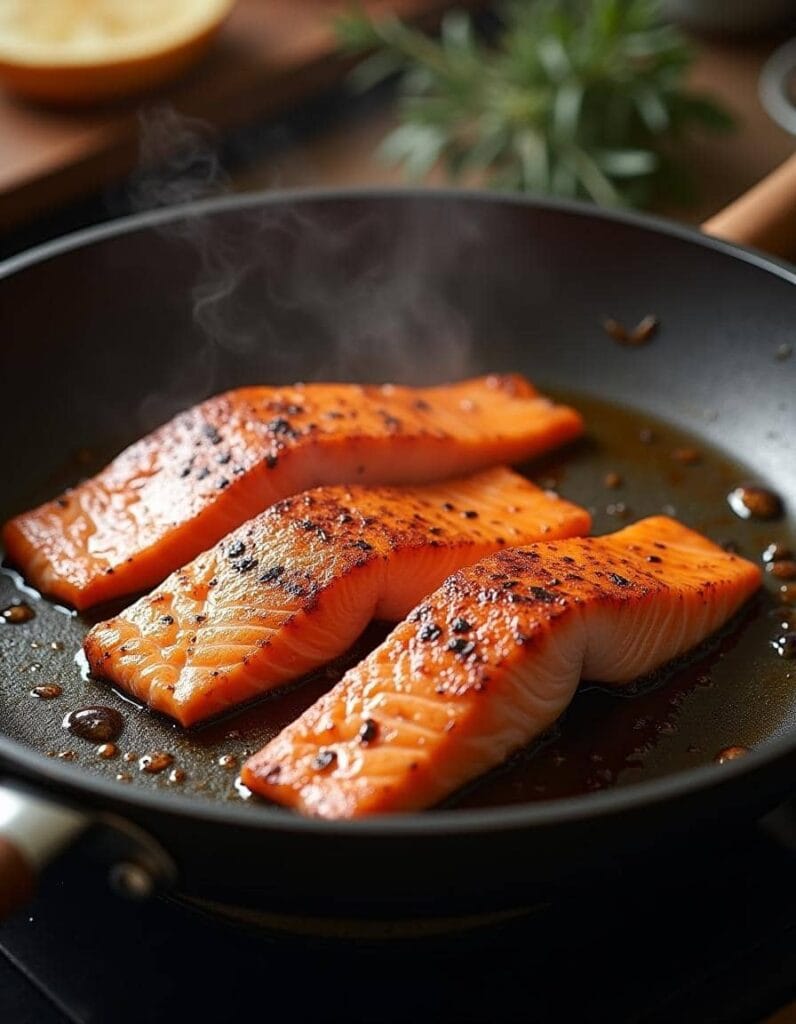
3. Prepping Fresh Toppings
Prepare avocado slices, cucumbers, and other toppings. Steam edamame if using.
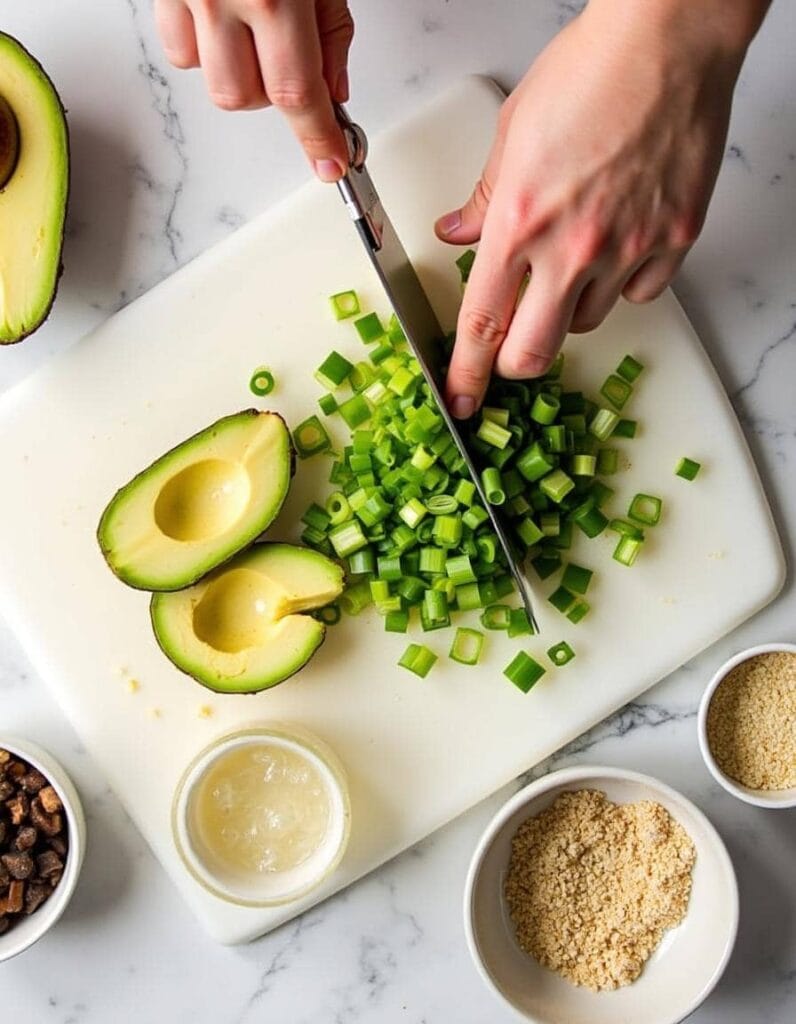
4. Assembling the Bowl
- Add rice to the bowl.
- Place the salmon on top.
- Arrange the toppings around the salmon.
- Drizzle with sauce and sprinkle with furikake or sesame seeds.
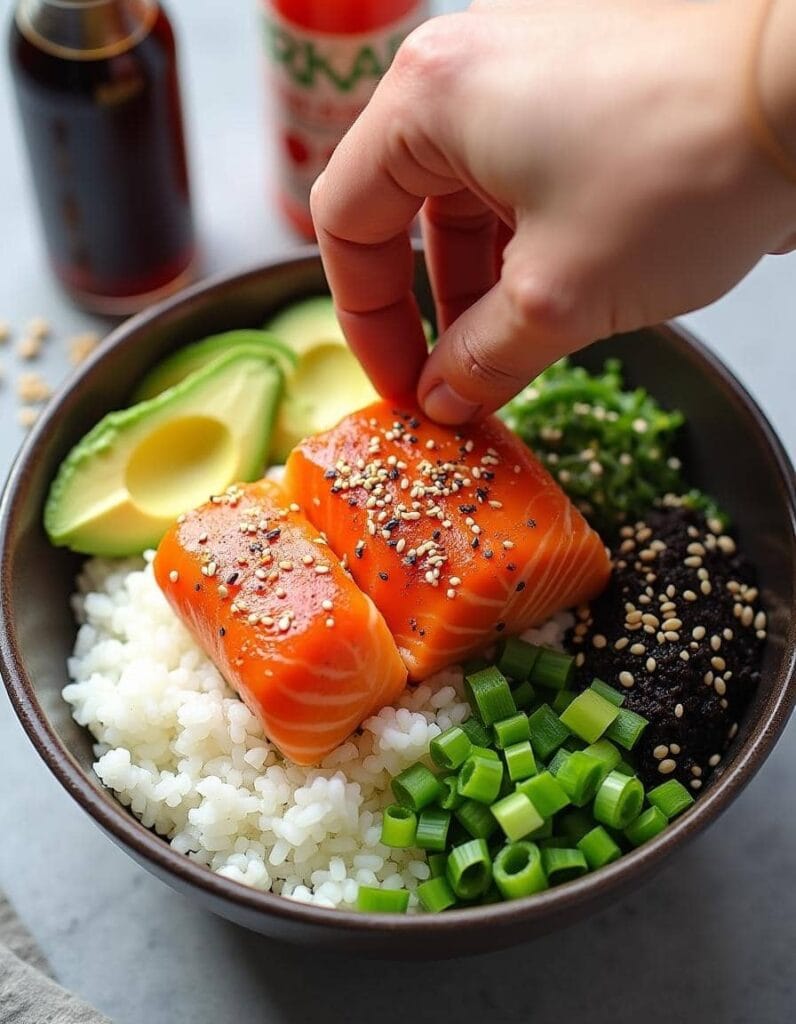
Tips for Success
- Use leftover rice—it holds up better in bowls.
- Toast sesame seeds for extra flavor.
- If you’re using frozen salmon, defrost it in cold water while you prepare the other ingredients.
Nutrition Facts
| Nutrient | Amount per Serving |
|---|---|
| Calories | 450 |
| Protein | 28g |
| Fat | 18g |
| Carbohydrates | 40g |
| Omega-3 Fatty Acids | 2g |
Why Salmon Rice Bowls Are So Healthy
Salmon rice bowls are more than just delicious—they’re a powerhouse of nutrition. The star of the dish, salmon, is rich in omega-3 fatty acids, essential for maintaining heart health and supporting brain function. Omega-3s reduce inflammation, lower blood pressure, and can even improve mental clarity and mood.
Vegetables in the bowl provide a mix of fiber, vitamins, and minerals. Fiber aids digestion and helps keep you full, while vitamins like A, C, and K support your immune system and bone health. Minerals such as potassium and magnesium help regulate blood pressure and muscle function.
The rice adds a valuable source of complex carbohydrates, which provide sustained energy without the crash. White rice is soft and comforting, while brown rice adds extra fiber and nutrients. Together, these components make a balanced meal that satisfies hunger and fuels your day.
Recipe Variations
Salmon rice bowls are endlessly customizable. Here are some fun variations to try:
- Spicy Bowl: If you love heat, add thinly sliced jalapeños and a generous drizzle of sriracha. This version is perfect for spice lovers looking for a kick in their meal.
- Sweet and Tangy Bowl: For a tropical twist, toss in pineapple chunks and drizzle with teriyaki sauce. The sweetness balances the savory flavors of the salmon and rice.
- Vegetarian Bowl: Swap the salmon for marinated tofu or grilled mushrooms. Both options soak up sauces beautifully and bring a hearty texture to the dish.
These variations ensure that you’ll never get bored of this versatile meal.
Common Mistakes to Avoid
- Overcooking the Salmon
One of the biggest mistakes is overcooking the salmon. Properly cooked salmon should be moist, tender, and flaky. Bake it for just 12-15 minutes or grill for 4-5 minutes on each side, depending on the thickness. - Forgetting to Season the Rice and Salmon
Seasoning is crucial to bring out the flavors of each ingredient. A splash of soy sauce or a sprinkle of furikake on the rice can make a big difference. - Assembling Too Early
Toppings like avocado and cucumbers can get soggy if left sitting too long. Always assemble the bowl just before eating to keep everything fresh and crisp.
By avoiding these mistakes, you’ll ensure every bowl turns out perfectly.
Serving Suggestions for Your Healthy Salmon Bowl
Salmon rice bowls pair beautifully with light and complementary sides:
- Miso Soup: A warm, umami-rich broth that rounds out the meal.
- Steamed Vegetables: Try broccoli, green beans, or bok choy for added nutrition and texture.
- Dessert: Indulge in Buttercream Macarons for a sweet and satisfying end to your meal.
These pairings elevate the meal into a full dining experience.
Healthier Alternatives to a Traditional Salmon Rice Bowl
Low-Carb Salmon Bowl Recipe
Replace white rice with cauliflower rice for a lighter, low-carb option.
Low-Sodium Sauce Options
Use tamari or coconut aminos instead of soy sauce to reduce sodium while keeping the savory taste.
Vegan Salmon Rice Bowl Alternative
Replace salmon with grilled tofu, tempeh, or chickpeas to make the dish plant-based.vor.
Other Yummy Recipes You’ll Love
If you’re on the hunt for more crowd-pleasing recipes, here are some suggestions:
- Honey Garlic Glazed Salmon with Roasted Asparagus – A Flavor-Packed Dinner.
- Roasted Stuffed Bell Peppers – The Ultimate Comfort Food That’s Surprisingly Easy.
- Sun-Dried Tomato and Feta Stuffed French Toast – It’s easy to make, like, ridiculously easy.
- 10-Minute Chicken Teriyaki Stir-Fry – A Quick and Flavorful Recipe.
- Tuscan Chicken – Creamy Comfort with a Touch of Italian Elegance.
FAQs About Salmon Rice Bowls
The BEST Salmon Bowl recipe is quick to make, healthy, and incredibly fresh! A teriyaki salmon fillet is cooked in the air fryer (or grill/oven), set on top of a bed of rice, and topped with avocado, cucumber, mango, edamame, green onions, and cilantro
The rich, fatty salmon is tempered by the comfortingly bland white rice, the latter absorbing what the former renders in excess.
Internal temperature: Use an instant-read meat thermometer; the salmon should register 145°F (63°C) at its thickest part. Flakiness: When gently pressed with a fork, the fish should easily flake apart. Avoid overcooking, as it can dry out the salmon. Cook with the skin side down for best results.
Keep eating salmon! Salmon is high in protein and omega-3 fatty acids that provide well-documented benefits for the heart and brain. Wild salmon is a great choice, and farmed salmon is a good alternative. Women of childbearing age and young children should continue to eat fish known to be low in contaminants.
Conclusion
Salmon rice bowls are more than just a meal—they’re a celebration of simplicity, flavor, and nutrition. Whether you’re looking for a quick weeknight dinner, a healthy lunch option, or a meal prep staple, this dish delivers on all fronts. With its perfect balance of protein-rich salmon, wholesome rice, and fresh, vibrant toppings, it’s a meal that satisfies both your taste buds and your body.
The beauty of salmon rice bowls lies in their versatility. You can customize them to suit your preferences, dietary needs, or whatever ingredients you have on hand. Craving something spicy? Add a drizzle of sriracha or a sprinkle of chili flakes. Want a tropical twist? Toss in some mango or pineapple. The possibilities are endless, making this dish a go-to for anyone who loves variety in their meals.
Not only are salmon rice bowls delicious, but they’re also incredibly nutritious. Packed with omega-3 fatty acids, lean protein, fiber, and essential vitamins, they’re a powerhouse of health benefits. Plus, they’re easy to prepare, requiring minimal time and effort—perfect for busy lifestyles.
So, what are you waiting for? Gather your ingredients, follow the simple steps, and treat yourself to a bowl that’s as nourishing as it is flavorful. Whether you’re cooking for one, feeding a family, or prepping meals for the week, salmon rice bowls are sure to become a favorite in your recipe rotation. Enjoy!

